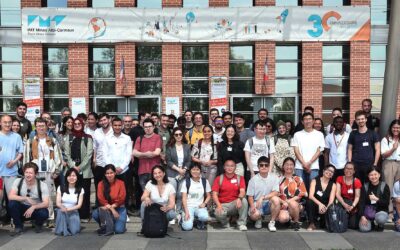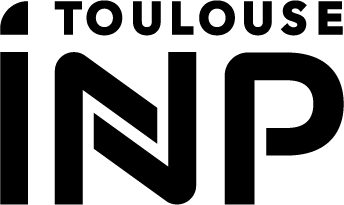
LCC
Activités de l’équipe
Depuis sa création, l’équipe « Ligands, architectures complexes et catalyse » a réuni un éventail de savoir-faire en chimie organique et hétérochimie des ligands, chimie de coordination, chimie organométallique, catalyse homogène, études de mécanismes de réaction par des méthodes expérimentales (y compris la cinétique) et de modélisation, et polymérisation radicalaire par transfert d’atome.
Membres de l’équipe
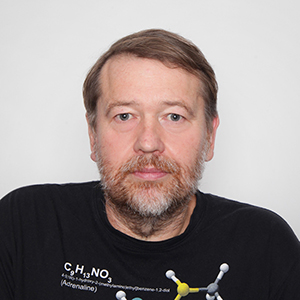
MANOURY Eric

DEYDIER Eric
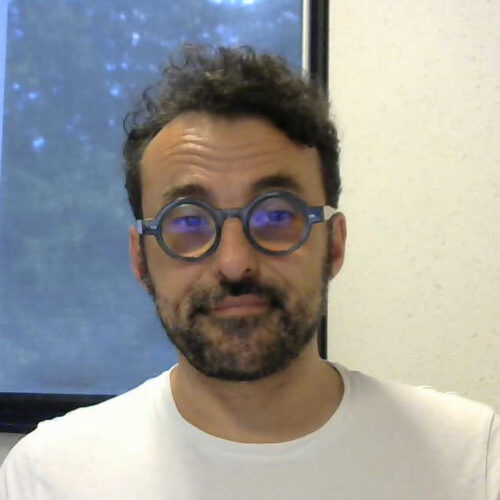
AGUSTIN Dominique

AUDIN Catherine

BIBAL-KOEPKE Christine
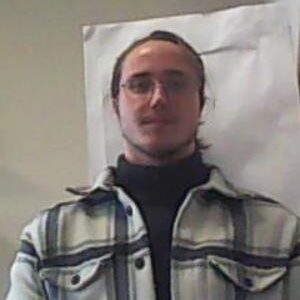
BOULINGUEZ Clément
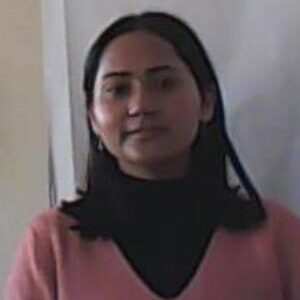
CHHETRI Shagun

CHRISTOFOROU Alexandros
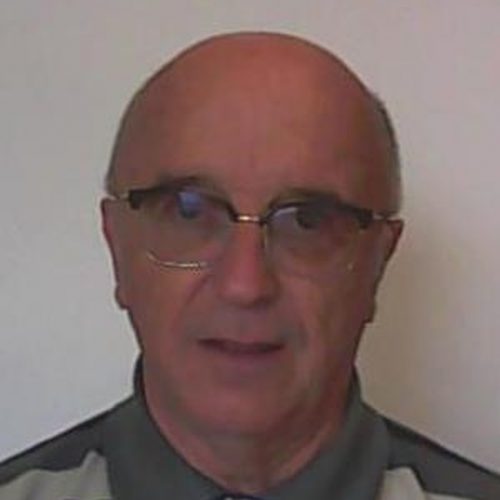
DARAN Jean-Claude
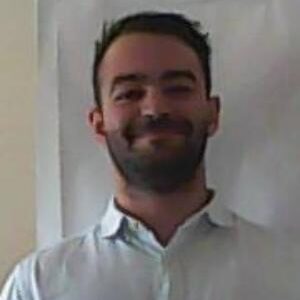
FAGUÉ Vincent
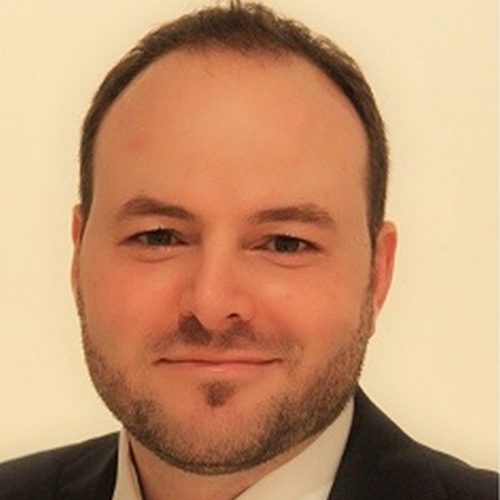
FLIEDEL Christophe

FORGET Laurianne
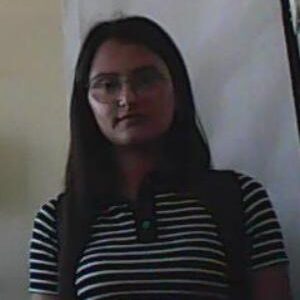
GHARBI Narjes
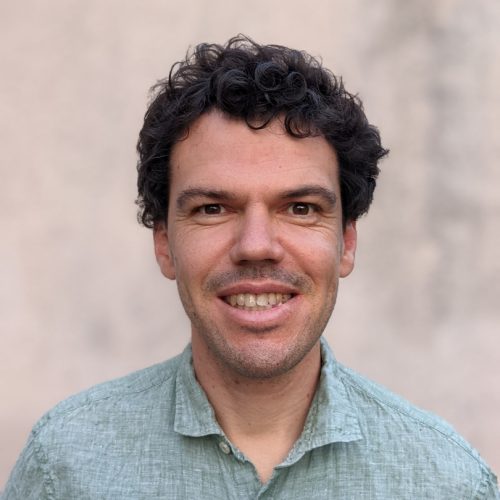
GUILLO Pascal
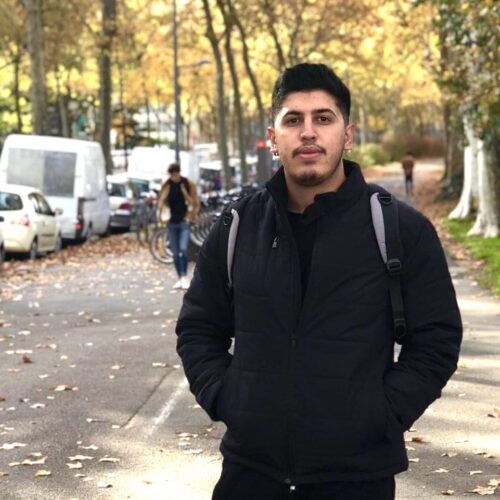
HAIDAR Ali Alhadi
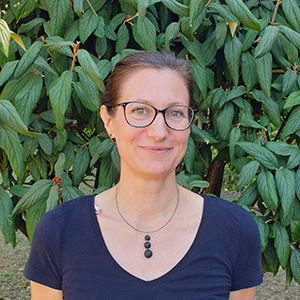
LABANDE Agnes
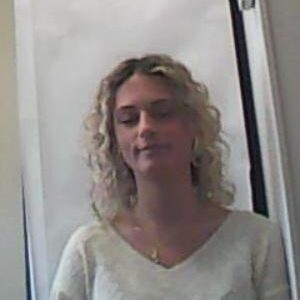
LEGOUADEC Maelle

MASSOU Stephane
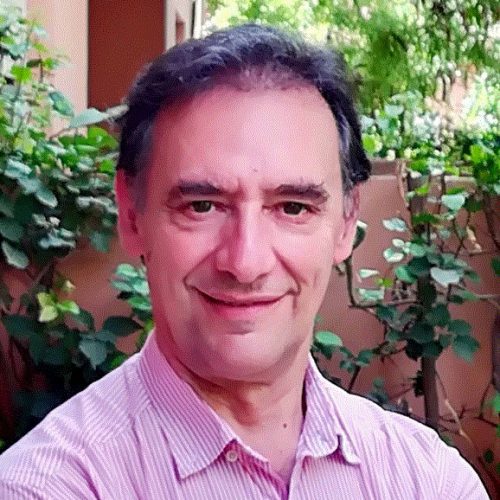
POLI Rinaldo
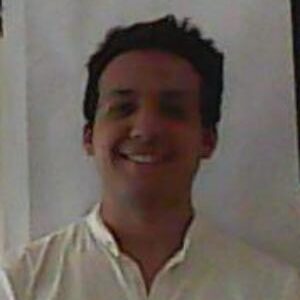
PULIDO DIAZ Israel

SUNDARARAJU Basker
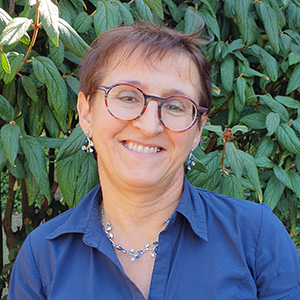
VINCENDEAU Sandrine
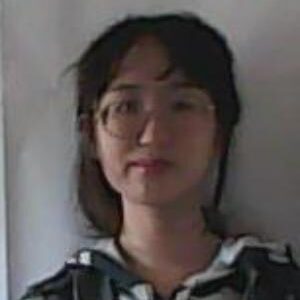
YANG Runqian
Aucun résultat trouvé
Thèmes de recherche
Catalyse
Notre intérêt porte sur la mise au point de nouveaux systèmes catalytiques.
Architectures complexes
Un axe de travail important de l’équipe concerne l’hétérogénéisation de réactions afin de développer des systèmes catalytiques recyclables, plus verts, ouvrant l’accès à des procédés en continu
Ligands et complexes
Le développement de ligands et de complexes originaux pour améliorer ou développer de nouvelles réactions est un axe fort de l’équipe.
Actualités de l’équipe
Rinaldo Poli élu à l’Academia Europaea
Cette élection par l’Academia Europaea reconnaît la contribution exceptionnelle de Rinaldo Poli.
Les plastiques de demain s’imaginent aujourd’hui [podcast]
Podcast CNRS « Qu’est-ce que tu cherches ? » avec Christophe Fliedel
3ème école d’été « Catalysis: from understanding to application » à Albi : un grand succès !
Eric Manoury (équipe G) et Philippe Serp (équipe C) font partie du comité d’organisation de cette école : réseau catalyse à Toulouse
Publications
2025
Influence of ancillary ligands on the formation and functionality of oxovanadium(v) metallosupramolecular assemblies: advanced computational and catalytic analyses
Topić E., Sarjanović J., Musija D., Mandarić M., Cocut A., Hrenar T., Agustin D., Pisk J., Vrdoljak V.
Dalton Trans. 2025, 54(13), 5532-5545.
10.1039/D5DT00105F – hal-05065012
Group 10 metal complexes of the 3,4-bis(dicyclohexylphosphino)thiophene (dcypt) ligand: Synthesis, characterization and catalysis
Fagué V., Mallet-Ladeira S., Guillo P., Fliedel C.
Inorg. Chim. Acta 2025, 581, 122610/1-8.
10.1016/j.ica.2025.122610 – hal-05065054
(P,N,P)Pd- versus (P,N,P)Ni-catalyzed Suzuki-Miyaura cross-coupling reactions under green conditions†
Fagué V., Dos Santos D. T., Daran J. C., Mallet-Ladeira S., Guillo P., Fliedel C.
Eur. J. Inorg. Chem. 2025, 28(6), e202400729/1-17.
10.1002/ejic.202400729 – hal-04939963
[Rh2(phesp)2]: a bulkier [Rh2(esp)2] analog to tune the site-selectivity in carbene C–H insertion reactions
Labande A., Ruzhylo I., Vorozhbian A., Vincendeau S., Saget T., Mallet-Ladeira S., Dauban P., Manoury E.
ChemCatChem, 2025, 17(1), e202400874/1-12.
10.1002/cctc.202400874 – hal-04574738
2024
Unveiling the catalytic power of molybdenum complexes formed from acyl-hydrazones: Deciphering the relationship between structure, activity and mechanisms
Mrkonja S., Pajski M., Topić E., Agustin D., Pisk J.
European Journal of Inorganic Chemistry 2024, 27(35), e202400350/1-12.
https://doi.org/10.1002/ejic.202400350
https://hal.science/hal-04932354
Bifunctional molybdenum and vanadium materials: semiconductor properties for advanced electronics and catalytic efficiency in linalool oxidation
Sarjanović J., Cader M., Topić E., Razum M., Agustin D., Rubčić M., Pavić L., Pisk J.
Materials Advances 2024, 5(23), 9391-9402.
http://dx.doi.org/10.1039/D4MA00790E
https://hal.science/hal-04932460
Synthesis and organocatalytical evaluation of optically pure inherently chiral calix[4]arene phosphoric acids
Karpus A., Yesypenko O., Daran J.-C., Voitenko Z., Manoury E., Kalchenko V.
Journal of Inclusion Phenomena and Macrocyclic Chemistry 2024, 105, 75-86.
https://doi.org/10.1007/s10847-024-01267-9
https://hal.science/hal-04829067
Biomass-derived substrate hydrogenation over rhodium nanoparticles supported on functionalized mesoporous silica
Pulido-Díaz I. T., Martínez D., Salas-Martin K. P., Portales-Martínez B., Agustin D., Reina A., Guerrero-Ríos I.
Nanoscale 2024, 24(16), 22216-22229.
http://dx.doi.org/10.1039/D4NR02579B
https://hal.science/hal-04815564
Mechanistic investigations on Cp*CoIII-catalyzed quinoline transfer hydrogenation with formic acid
Garg N., Dahiya P., Mallet-Ladeira S., Poli R., Sundararaju B.
ACS Catalysis 2024, 14(23), 17556-17570.
https://doi.org/10.1021/acscatal.4c05271
https://hal.science/hal-04782211
Understanding ketone hydrogenation catalysis with anionic iridium(III) complexes: The crucial role of counterion and solvation
Kisten P., Vincendeau S., Manoury E., Lynam J. M., Slattery J. M., Duckett S. B., Lledos A., Poli R.
Chemical Science 2024, 15(48), 20478-20492.
http://dx.doi.org/10.1039/D4SC04629C
https://hal.science/hal-04777200
Rh nanoparticles confined in triphenylphosphine oxide-functionalized core-crosslinked micelles with a polyanionic shell: Synthesis, characterization, and application in aqueous biphasic hydrogenation
Abou-Fayssal C. J., Schill L., Poli R., Riisager A., Manoury E., Philippot K.
Reactive and Functional Polymers 2024, 205, 106061/1-8.
https://doi.org/10.1016/j.reactfunctpolym.2024.106061
https://hal.science/hal-04725286
Benchtop-stable carbyl iminopyridyl NiII complexes for olefin polymerization
Rauf H. S., Liu Y.-S., Arslan M., Solanki S. P. S., Deydier E., Poli R., Grabow L. C., Harth E.
ACS Catalysis 2024, 14(17), 13136-13147.
https://doi.org/10.1021/acscatal.4c02708
https://hal.science/hal-04692509
Synthesis and characterization of new highly fluorinated phosphoramidates bearing different alkylamino groups
Argoubi S., Sanhoury M. A., Zerough I., Manoury E., Chehidi I.
Synthetic Communications 2024, 54(15), 1273-1283.
https://doi.org/10.1080/00397911.2024.2382784
https://hal.science/hal-04665277
Polymeric nanoreactors for catalytic applications
Abou-Fayssal C. J., Poli R., Philippot K., Riisager A., Manoury E.
Comptes Rendus Chimie 2024, 27(S1), 1-23.
https://doi.org/10.5802/crchim.301
https://hal.science/hal-04635254
Impact of POM’s coordination mode and Mo-hybrid constituents on the binding, stability, and catalytic properties of hybrid (pre)catalysts
Pisk J., Vrdoljak V., Mandarić M., Hrenar T., Agustin D., Rubčić M.
RSC Advances 2024, 14(27), 19029-19040.
http://dx.doi.org/10.1039/D4RA03563A
https://hal.science/hal-04632363
Molybdenum complexes derived from 2-hydroxy-5-nitrobenzaldehyde and benzhydrazide as potential oxidation catalysts and semiconductors
Pisk J., Šušković M., Topić E., Agustin D., Judaš N., Pavić L.
International Journal of Molecular Sciences 2024, 25(9), 4859/1-16.
https://doi.org/10.3390/ijms25094859
https://hal.science/hal-04593900
Coordination Chemistry Inspires Molecular Catalysis
Poli R., Caminade A.-M. (Eds).
Zenodo, 2024.
https://doi.org/10.5281/zenodo.10966127
https://hal.science/hal-04548441
One-pot synthesis of Rh nanoparticles in polycationic-shell, triphenylphosphine oxide-functionalized core-crosslinked micelles for aqueous biphasic hydrogenation
Abou-Fayssal C. J., Schill L., Poli R., Manoury E., Philippot K., Riisager A.
ChemCatChem 2024, 16(15), e202400189/1-10.
https://doi.org/10.1002/cctc.202400189
https://hal.science/hal-04524464
Mechanistic insights of the Ir-bipyridonate catalyzed aqueous methanol dehydrogenation and transfer dehydrogenation to acetophenone: Experimental and DFT study
Garg N., Poli R., Sundararaju B.
European Journal of Inorganic Chemistry 2024, 27(13), e202300744/1-10.
https://doi.org/10.1002/ejic.202300744
https://hal.science/hal-04502966
Preparative and catalytic properties of MoVI mononuclear and metallosupramolecular coordination assemblies bearing hydrazonato ligands
Mandarić M., Topić E., Agustin D., Pisk J., Vrdoljak V.
International Journal of Molecular Sciences 2024, 25 (3), 1503/1-17.
https://doi.org/10.3390/ijms25031503
https://hal.science/hal-04501274
Peculiar catalytic properties of oxide glass-(ceramics) in epoxidation reactions
Pisk J., Marijan S., Klaser T., Mošner P., Koudelka L., Agustin D., Skoko Ž., Pavić L.
Journal of Non-Crystalline Solids 2024, 626, 122780/1-5.
https://doi.org/10.1016/j.jnoncrysol.2023.122780
https://hal.science/hal-04503149
Hafnium coordination vitrimer based on carboxylate exchange: synthesis, properties, and mechanistic investigations on the [Hf6O4(OH)4(O2CMe)12]2 model compound
Murali M., Berne D., Daran J.-C., Bijani C., Manoury E., Leclerc E., Caillol S., ladmiral V., Joly-Duhamel C., Poli R.
European Journal of Inorganic Chemistry 2024, 27(8), e202300672/1-11.
https://doi.org/10.1002/ejic.202300672
https://hal.science/hal-04427867
New protocol for the synthesis of S-thioesters from benzylic, allylic and tertiary alcohols with thioacetic acid
Lachguar A., Bandyopadhyay U., Ech-Chariy M., Vincendeau S., Audin C., Daran J.-C., Manoury E., Poli R., Deydier E.
Chemistry – A European Journal 2024, 30(1), e202302551/1-13.
https://doi.org/10.1002/chem.202302551
https://hal.science/hal-04268374
2023
Improving the kinetic resolution of rac-2-(diphenylthiophosphinoferrocene) methanol catalyzed by Thermomyces lanuginosus lipase immobilized on immobead-150
Santana Fróes N. O., Bandyopadhyay U., Negreiro J. M., de Sousa Fonseca T., Nunes F. M., de Mattos M. C., Zanatta G., de Melo Pereira J. V., de Jesus Guimarães C., do Ó Pessoa C., Poti e Silva B., Manoury E., Ferreira Oliveira M. C.
Molecular Catalysis 2023, 535, 112867/1-9.
https://doi.org/10.1016/j.mcat.2022.112867
https://hal.science/hal-04669292
Coordination adaptable networks: Introducing vitrimer properties using dynamic coordination bonds
Murali M., Manoury E., Poli R.
European Journal of Inorganic Chemistry 2023, 26(36), e202300574/1-13.
https://doi.org/10.1002/ejic.202300574
https://hal.science/hal-04269901
Combination of fluorine and tertiary amine activation in catalyst-free thia-michael covalent adaptable networks
Berne D., Poli R., Caillol S., Ladmiral V., Leclerc E.
Macromolecules 2023, 56(20), 8260–8274.
https://doi.org/10.1021/acs.macromol.3c01129
https://hal.science/hal-04232888
Hydrogenation and dehydrogenation of N-heterocycles under Cp*Co(III)-catalysis
Dahiya P., Garg N., Poli R., Sundararaju B.
Dalton Transactions 2023, 52(41), 14752-14756.
http://dx.doi.org/10.1039/D3DT03161F
https://hal.science/hal-04232849
Role of organic solvent and influence of oxidant in the oxidation of linalool catalyzed by molybdenum and vanadium complexes
Haidar A. A. H., Agustin D.
Tetrahedron Green Chem 2023, 2, 100029/1-8.
https://doi.org/10.1016/j.tgchem.2023.100029
https://hal.science/hal-04233003
Confinement of Rh nanoparticles in triphenylphosphine oxide-functionalized core-crosslinked micelles for aqueous biphasic hydrogenation catalysis
Abou-Fayssal C. J., Fliedel C., Poli R., Riisager A., Philippot K., Manoury E.
Materials Today Chemistry 2023, 34, 101752/1-10.
https://doi.org/10.1016/j.mtchem.2023.101752
https://hal.science/hal-04232955
Asymmetric syntheses of enantioenriched 2,5-disubstituted pyrrolidines
Lazib Y., Naves J. G., Labande A., Dauban P., Saget T.
ACS Organic & Inorganic Au 2023, 3(3), 120-129.
https://doi.org/10.1021/acsorginorgau.2c00061
https://hal.science/hal-04210008
Acetate ion addition to and exchange in (1,5-cyclooctadiene)rhodium(i) acetate: relevance for the coagulation of carboxylic acid-functionalized shells of core-crosslinked micelle latexes
Fiore A. M., Petrelli V., Fliedel C., Manoury E., Mastrorilli P., Poli R.
Dalton Transactions 2023, 52(35), 12534-12542.
http://dx.doi.org/10.1039/D3DT02260A
https://hal.science/hal-04194797
Homolytic PdII–C bond cleavage in the MILRad process: Reversibility and termination mechanism
Poli R., Nguyen D. H., Liu Y.-S., Harth E.
Organometallics 2023, 42(16), 2277-2286.
https://doi.org/10.1021/acs.organomet.3c00277
https://hal.science/hal-04194769
Termination of the carbomethoxyisopropyl radical, a poly(methyl methacrylate) model, in the presence of copper complexes and proton donors
Sobieski J., Silab S. D., Thevenin L., Matyjaszewski K., Fliedel C., Poli R.
Macromolecules 2023, 56(16), 6339-6353.
https://doi.org/10.1021/acs.macromol.3c00545
https://hal.science/hal-04194741
Acetate exchange mechanism on a Zr12 oxo hydroxo cluster: Relevance for reshaping zr-carboxylate coordination adaptable networks
Murali M., Bijani C., Daran J.-C., Manoury E., Poli R.
Chemical Science 2023, 14(30), 8152-8163.
http://dx.doi.org/10.1039/D3SC02204H
https://hal.science/hal-04155107
Transamidation vitrimers enabled by neighbouring fluorine atom activation
Berne D., Tanguy G., Caillol S., Poli R., Ladmiral V., Leclerc E.
Polymer Chemistry 2023, 14(30), 3479-3492.
http://dx.doi.org/10.1039/D3PY00577A
https://hal.science/hal-04174700
Redox-responsive catalysis: fine tuning of chemoselectivity in the intramolecular reaction of diazo compounds catalysed by ferrocene-functionalised dirhodium(ii) complexes
Ruzhylo I., Vincendeau S., Dauban P., Manoury E., Poli R., Labande A.
New Journal of Chemistry 2023, 47(20), 9601-9610.
https://dx.doi.org/10.1039/D3NJ01131C
https://hal.science/hal-04099187
A mononuclear cobalt(III) carboxylate complex with a fully O-based coordination sphere: CoIII-O bond homolysis and controlled radical polymerisation from [Co(acac)2(O2CPh)]
Michelas M., Daran J.-C., Saquet A., Fliedel C., Poli R.
Dalton Transactions 2023, 52(20), 6791-6798.
http://dx.doi.org/10.1039/D3DT00910F
https://hal.science/hal-04084576
Facile assembly of C–N bond-containing polymer electrolytes enabled by lithium salt-catalyzed aza-Michael addition
Wang J., Zhang C., Zhang Y., Chen G., Poli R., Xie X., Xue Z.
Macromolecules 2023, 56(6), 2484-2493.
https://doi.org/10.1021/acs.macromol.2c02230
https://hal.science/hal-04036882
A new classification for the ever-expanding mechanistic landscape of catalyzed hydrogenations, dehydrogenations and transfer hydrogenations
Poli R.
in Advances in Organometallic Chemistry. Pérez Pedro J. (Ed.). Elsevier/Academic Press: Cambridge, 2023, vol. 79, pp. 87-133. (978-0-443-18888-6).
https://doi.org/10.1016/bs.adomc.2022.10.002
https://hal.science/hal-04016457
Cobalt(II) and cobalt(III) complexes of tripodal tetradentate diamino-bis(phenolate) ligands: Synthesis, characterization, crystal structures and evaluation in radical polymerization processes
Michelas M., Redjel Y. K., Daran J.-C., Benslimane M., Poli R., Fliedel C.
Inorganica Chimica Acta 2023, 549, 121408/1-9.
https://doi.org/10.1016/j.ica.2023.121408
https://hal.science/hal-04008189
Catalyst-free thia-Michael addition to alpha-trifluoromethylacrylates for 3D network synthesis
Berne D., Lemouzy S., Guiffrey P., Caillol S., Ladmiral V., Manoury E., Poli R., Leclerc E.
Chemistry – A European Journal 2023, 29(20), e202203712/1-10.
https://doi.org/10.1002/chem.202203712
https://hal.science/hal-03972802
IrI(η4-diene) precatalyst activation by strong bases: formation of an anionic IrIII tetrahydride
Kisten P., Manoury E., Lledos A., Whitwood A. C., Lynam J. M., Slattery J. M., Duckett S. B., Poli R.
Dalton Transactions 2023, 52(8), 2495-2505.
http://dx.doi.org/10.1039/D2DT04036K
https://hal.science/hal-03960179
Synthesis of tris[2-(dimethylamino)ethyl]amine with regiospecific deuterium labels
Sobieski J., Ruzhylo I., Szczepaniak G., Gorczyński A., Matyjaszewski K., Manoury E., Poli R.
ChemistrySelect 2023, 8(5), e202300053/1-5.
https://doi.org/10.1002/slct.202300053
https://hal.science/hal-03971862
2022
Organometallic derivatives of decoquinate targeted toward toxoplasma gondii
Betts H. D., Ong Y. C., Anghel N., Keller S., Karges J., Voutsara N., Müller J., Manoury E., Blacque O., Cariou K., Hemphill A., Gasser G.
Organometallics 2022, 41(15), 2035-2041.
https://doi.org/10.1021/acs.organomet.2c00204
https://hal.science/hal-03727450
Synthesis, characterization and electrochemical behavior of new bis(fluoroalkyl) ferrocenylphosphonates and their tin tetrachloride complexes
Mechi H., Sanhoury M. A. K., Laribi F., Manoury E., Mastouri M., Raouafi N., Bousseksou A., Dhia M. T. B.
Journal of Organometallic Chemistry 2022, 957, 122178/1-9.
https://doi.org/10.1016/j.jorganchem.2021.122178
https://hal.archives-ouvertes.fr/hal-03576457
Core-crosslinked micelles with a poly-anionic poly(styrene sulfonate)-based outer shell made by RAFT polymerization
Wang H., Fliedel C., Manoury E., Poli R.
Polymer 2022, 243, 124640/1-9.
https://doi.org/10.1016/j.polymer.2022.124640
https://hal.archives-ouvertes.fr/hal-03574234
Molybdenum-, vanadium-, and tungsten-containing materials for catalytic applications
Agustin D., Pisk J.
Materials 2022, 15(5), 1720/1-3.
https://doi.org/10.3390/ma15051720
https://hal.archives-ouvertes.fr/hal-03592139
Interrupted intramolecular hydroaminomethylation of N-protected-2-vinyl anilines: Novel access to 3-substitued indoles or indoline-2-ols
Hochberger-Roa F., García-Ríos P. H., López-Cortés J. G., Ortega-Alfaro M. C., Daran J.-C., Gouygou M., Urrutigoïty M.
Molecules 2022, 27(3), 1074/1-12.
https://doi.org/10.3390/molecules27031074
https://hal.archives-ouvertes.fr/hal-03592301
Catalyst-free epoxy vitrimers based on transesterification internally activated by an α–CF3 group
Berne D., Cuminet F., Lemouzy S., Joly-Duhamel C., Poli R., Caillol S., Leclerc E., Ladmiral V.
Macromolecules 2022, 55(5), 1669–1679.
https://doi.org/10.1021/acs.macromol.1c02538
https://hal.archives-ouvertes.fr/hal-03583794
Heteroleptic dirhodium(II) complexes with redox-active ferrocenyl ligands: Synthesis, electrochemical properties, and redox-responsive chemoselectivity in carbene C−H insertion
Ruzhylo I., Sournia-Saquet A., Moreau A., Delord T., Manoury E., Poli R., Labande A.
European Journal of Inorganic Chemistry 2022, 2022(12), e202200033/1-10.
https://doi.org/10.1002/ejic.202200033
https://hal.archives-ouvertes.fr/hal-03528757
Synthesis of ferrocenyl phosphorhydrazone dendrimers
Caminade A.-M., Manoury E.
Encyclopedia Platform. MDPI: Bâle (Switzerland), 2022, Entry 23675.
https://encyclopedia.pub/entry/23675
https://hal.archives-ouvertes.fr/hal-03714158
Cobalt–carbon bonding in a salen-supported cobalt(IV) alkyl complex postulated in oxidative MHAT catalysis
Wilson C. V., Kim D., Sharma A., Hooper R. X., Poli R., Hoffman B. M., Holland P. L.
Journal of the American Chemical Society 2022, 144(23), 10361-10367.
https://doi.org/10.1021/jacs.2c02128
https://hal.archives-ouvertes.fr/hal-03689305
Synthesis and crystal structure of [(Sp)-(2-phenyl-ferrocen-yl)meth-yl]tri-methyl-ammonium iodide di-chloro-methane monosolvate
Lachguar A., Deydier E., Labande A., Manoury E., Poli R., Daran J. C.
Acta Crystallographica Section E 2022, 78(Pt 7), 722-726.
https://doi.org/10.1107/s2056989022006053
https://hal.archives-ouvertes.fr/hal-03737936
Understanding the reshaping of fluorinated polyester vitrimers by kinetic and DFT studies of the transesterification reaction
Lemouzy S., Cuminet F., Berne D., Caillol S., Ladmiral V., Poli R., Leclerc E.
Chemistry – A European Journal 2022, 28(48), e202201135/1-10.
https://doi.org/10.1002/chem.202201135
https://hal.archives-ouvertes.fr/hal-03689286
Coordination adaptable networks: zirconium(IV) carboxylates
Murali M., Berne D., Joly-Duhamel C., Caillol S., Leclerc E., Manoury E., Ladmiral V., Poli R.
Chemistry – A European Journal 2022, 28(61), e202202058/1-6.
https://doi.org/10.1002/chem.202202058
https://hal.archives-ouvertes.fr/hal-03739165
Phosphine-functionalized core-crosslinked micelles and nano-gels with an anionic poly(styrenesulfonate) shell: Synthesis, rhodium(I) coordination and aqueous biphasic hydrogenation catalysis
Wang H., Abou-Fayssal C. J., Fliedel C., Manoury E., Poli R.
Polymers 2022, 14(22), 4937/1-25.
https://doi.org/10.3390/polym14224937
https://hal.archives-ouvertes.fr/hal-03852403
Ring size-reactivity relationship in radical ring-opening copolymerisation of thionolactones with vinyl pivalate
Ivanchenko O., Mazières S., Poli R., Harrisson S., Destarac M.
Polymer Chemistry 2022, 13(45), 6284-6292
http://dx.doi.org/10.1039/D2PY01153K
https://hal.archives-ouvertes.fr/hal-03846177
Molybdenum, vanadium, and tungsten-based catalysts for sustainable (ep)oxidation
Pisk J., Agustin D.
Molecules 2022, 27(18), 6011/1-26.
https://doi.org/10.3390/molecules27186011
https://hal.archives-ouvertes.fr/hal-03877754
2021
Alcohol oxidation assisted by molybdenum hydrazonato catalysts employing hydroperoxide oxidants
Mihalinec J., Pajski M., Guillo P., Mandarić M., Bebić N., Pisk J., Vrdoljak V.
Catalysts 2021, 11(8), 881/1-14.
https://doi.org/10.3390/catal11080881
https://hal.science/hal-04808288
Metal Complexes as Catalysts/Moderators for Polymerization Reactions
Fliedel C., Dagorne S., Le Roux E.
in Comprehensive Coordination Chemistry III, Constable E. C., Parkin G., Que Jr. L. (Eds.). Elsevier: Oxford, 2021, vol. 9, pp. 410-464. (978-0-12-409547-2).
https://doi.org/10.1016/B978-0-08-102688-5.00089-1
https://hal.archives-ouvertes.fr/hal-03594817
Recent representative advances on the synthesis and reactivity of N-heterocyclic-carbene-supported zinc complexes
Specklin D., Fliedel C., Dagorne S.
The Chemical Record 2021, 21(5), 1130-1143.
https://doi.org/10.1002/tcr.202100041
https://hal.archives-ouvertes.fr/hal-03204158
Chiral N-Heterocyclic Carbene-Based Ligands
César V., Fliedel C., Labande A.
in New Directions in Organic & Biological Chemistry Series. Chiral Ligands : Evolution of Ligand Libraries for Asymmetric Catalysis, Diéguez M. (Ed.). CRC Press: Boca Raton, 2021, pp. 195-232. (978-0-367-4-28488).
https://doi.org/10.1201/9780367855734-6
https://hal.archives-ouvertes.fr/hal-03230806
Implication of oxidant activation on olefin epoxidation catalysed by molybdenum catalysts with aroylhydrazonato ligands: Experimental and theoretical studies
Bafti A., Razum M., Topić E., Agustin D., Pisk J., Vrdoljak V.
Molecular Catalysis 2021, 512, 111764/1-12.
https://doi.org/10.1016/j.mcat.2021.111764
https://hal.archives-ouvertes.fr/hal-03356884
RAFT polymerisation of trifluoroethylene: the importance of understanding reverse additions
Bouad V., Guerre M., Totée, Silly G., Gimello O., Améduri B., Tahon J.-F., Poli R., Barrau S., Ladmiral V.
Polymer Chemistry 2021, 12(15), 2271-2281.
http://dx.doi.org/10.1039/D0PY01754J
https://hal.archives-ouvertes.fr/hal-03182909
Oxidation-promoted synthesis of ferrocenyl planar chiral rhodium(III) complexes for C–H functionalization catalysis
Cabanes J., Odnoroh M., Duhayon C., Bijani C., Sournia-Saquet A., Polia R., Labande A.
Mendeleev Communications 2021, 31(5), 620-623.
https://doi.org/10.1016/j.mencom.2021.09.010
https://hal.archives-ouvertes.fr/hal-03412564
Chiral Tridentate-Based Ligands
Bandyopadhyay U., Sundararaju B., Poli R., Manoury E.
in New Directions in Organic & Biological Chemistry Series. Chiral Ligands : Evolution of Ligand Libraries for Asymmetric Catalysis, Diéguez M. (Ed.). CRC Press: Boca Raton, 2021, pp. 167-194. (978-0-367-4-28488).
https://doi.org/10.1201/9780367855734-5
https://hal.archives-ouvertes.fr/hal-03230854
Amphiphilic polymeric nanoreactors containing Rh(i)–NHC complexes for the aqueous biphasic hydrogenation of alkenes
Salomon Sambou S., Hromov R., Ruzhylo I., Wang H., Allandrieu A., Sabatier C., Coppel Y., Daran J.-C., Gayet F., Labande A., Manoury E., Poli R.
Catalysis Science & Technology 2021, 11, 6811-6824.
http://dx.doi.org/10.1039/D1CY00554E
https://hal.archives-ouvertes.fr/hal-03171897
Synthesis and crystallographic studies of 2-(diphenylphosphinothioyl)-2-(3-oxobut-1-en-yl)ferrocene
Bandyopadhyay U., Sundararaju B., Poli R., Manoury E., Daran J.-C.
Acta Crystallographica Section E 2021, 77(8), 853-856.
https://doi.org/10.1107/S205698902100760X
https://hal.archives-ouvertes.fr/hal-03364269
Replacement of volatile acetic acid by solid sio2@COOH silica (nano)beads for (ep)oxidation using Mn and Fe complexes containing BPMEN ligand
Wang Y., Gayet F., Daran J.-C., Guillo P., Agustin D.
Molecules 2021, 26(18), 5435/1-26.
https://doi.org/10.3390/molecules26185435
https://hal.archives-ouvertes.fr/hal-03356932
New borrowing hydrogen mechanism for redox-active metals
Chakraborty P., Sundararaju B., Manoury E., Poli R.
ACS Catalysis 2021, 11, 11906-11920.
https://doi.org/10.1021/acscatal.1c02616
https://hal.archives-ouvertes.fr/hal-03244195
NMR investigations of polytrifluoroethylene (PTrFE) synthesized by RAFT
Bouad V., Guerre M., Zeliouche S., Améduri B., Totée C., Silly G., Poli R., Ladmiral V.
Polymer Chemistry 2021, 12(15), 2293-2304.
http://dx.doi.org/10.1039/D0PY01753A
https://hal.archives-ouvertes.fr/hal-03188630
Efficient molybdenum hydrazonato epoxidation catalysts operating under green chemistry conditions: Water vs. decane competition
Mrkonja S., Topić E., Mandarić M., Agustin D., Pisk J.
Catalysts 2021, 11(7), 756/1-14.
https://doi.org/10.3390/catal11070756
https://hal.archives-ouvertes.fr/hal-03267910
Rhodium nanoparticles inside well-defined unimolecular amphiphilic polymeric nanoreactors: synthesis and biphasic hydrogenation catalysis
Wang H., Fiore A. M., Fliedel C., Manoury E., Philippot K., Dell’Anna M. M., Mastrorilli P., Poli R.
Nanoscale Advances 2021, 3(9), 2554-2566.
http://dx.doi.org/10.1039/D1NA00028D
https://hal.archives-ouvertes.fr/hal-03176469
Triphenylphosphine-functionalized core-cross-linked micelles and nanogels with a polycationic outer shell: Synthesis and application in rhodium-catalyzed biphasic hydrogenations
Wang H., Vendrame L., Fliedel C., Chen S., Gayet F., D’Agosto F., Lansalot M., Manoury E., Poli R.
Chemistry – A European Journal 2021, 27(16), 5205-5214.
https://doi.org/10.1002/chem.202004689
https://hal.archives-ouvertes.fr/hal-03081418
A journey into metal–carbon bond homolysis
Poli R.
Comptes Rendus Chimie 2021, 24(1), 147-175.
https://doi.org/10.5802/crchim.73
https://hal.archives-ouvertes.fr/hal-3209704
Phospholylmethano P-chirogenic-phosphine-borane as P-(η2-BH3)-chelating ligands of rhodium (I): Synthesis, characterization and asymmetric hydrogenation
Salomon-Bertrand C., Bayardon J., Lauréano H., Jugé S., Daran J.-C., Gouygou M.
Journal of Organometallic Chemistry 2021, 938, 121753/1-7.
https://doi.org/10.1016/j.jorganchem.2021.121753
https://hal.archives-ouvertes.fr/hal-03202816
Well-defined PIII-terminated polymers from phosphorylated carbodithioate RAFT agents
Karpus A., Harrisson S., Poli R., Mazières S., Manoury E., Destarac M.
Macromolecules 2021, 54(6), 2627-2636.
https://doi.org/10.1021/acs.macromol.0c02805
https://hal.archives-ouvertes.fr/hal-03200586
Cobalt complexes of an OSNSO-tetrapodal pentadentate ligand: Synthesis, structures and reactivity
Thevenin L., Daran J.-C., Poli R., Fliedel C.
Inorganica Chimica Acta 2021, 518, 120215/1-8.
https://doi.org/10.1016/j.ica.2020.120215
https://hal.archives-ouvertes.fr/hal-03108199
Enhanced aminolysis of cyclic carbonates by β-hydroxylamines for the production of fully biobased polyhydroxyurethanes
Quienne B., Poli R., Pinaud J., Caillol S.
Green Chemistry 2021, 23(4), 1678-1690.
http://dx.doi.org/10.1039/D0GC04120C
https://hal.archives-ouvertes.fr/hal-03148901
Partenariats
Cliquez-ici pour consulter les partenaires
Dr. Bruno Améduri, Dr. Vincent Ladmiral
Institut Charles Gerhardt (UMR 5253 CNRS)
Ingénierie et Architectures Macromoléculaires,
ENSCM, Place Eugène Bataillon,
34095 Montpellier, Cedex 5 (France)
Prof. Ahmed Benharref
Laboratoire de chimie biomoléculaire, substances naturelles et réactivité,
Unité associée au CNRST (URAC16)
Université Cadi-Ayyad
Faculté des sciences Semlalia
BP 2390, boulevard My Abdellah
40000 Marrakech (Morocco)
ICGM
Université Montpellier
CNRS, ENSCM
Montpellier (France)
Tel: +1-33-467144327
Département de Chimie
Université de Sherbrooke
2500, Blvd de l’Université
Faculté des sciences Semlalia
J1K2R1, Sherbrooke, Qc (Canada)
Tel: +1-819-821-7246
jerome.claverie@usherbrooke.ca
Dr. Franck D’Agosto, Dr. Muriel Lansalot
Chimie Catalyse Polymères et Procédés (C2P2)
Equipe LCPP (UMR 5265 CNRS/ESCPE/UCBLyon1)
CPE Lyon – 43, boulevard du 11 Novembre 1918
BP 2077
69616 Villeurbanne Cedex
Tel: +33-(0)472431770
muriel.lansalot@univ-lyon1.fr.fr
Prof. Henri Delmas, Dr. Carine Julcour , Dr. Jean-François Blanco
CNRS, LGC (Laboratoire de Génie Chimique)
4 Allée Emile Monso
BP 84234
31030 Toulouse Cedex 4 (France)
jeanfrancois.blanco@ensiacet.fr
Prof. Mathias Destarac, Dr. Stéphane Mazières
CNRS, IMRCP UMR 5623,
Université Paul Sabatier
118 route de Narbonne, 31062 Toulouse (France)
Dr. Christophe Detrembleur, Dr. Antoine Debuigne
Center for Education and Research on Macromolecules
University of Liege
Sart-Tilman B6
4000 Liege (Belgium)
Tel. +32 4 3663465
Fax. +32 4 3663497
christophe.detrembleur@ulg.ac.be
Universitat Rovira i Virgili
Campus Sescelades
Marcel·lí Domingo s/n
43007 Tarragona (Spain)
Tel. +34-977-558046 / 558627
Fax. +34-977-559563
Department of Chemistry
University of York
Heslington
York YO10 5DD (UK)
Tel. +44-1904-432564
Fax. +34-977-559563
Facultad de Química
Depto. de Química Orgánica
Universidad Nacional Autónoma de México
04510 México D.F., (Mexico)
Nikolaev Institute of Inorganic Chemistry,
Siberian Branch of the Russian Academy
of Sciences,
3 Lavrentiev av., Novosibirsk, 630090 (Russia)
Department of Chemistry,
Yale University,
New Haven, Connecticut 06511 (USA)
Departament de Química
Universitat Autònoma de Barcelona
Edifici Cn
08193 Bellaterra (Spain)
Tel: +34-935811716
Fax: +34-935812920
Dr. Alexandr M. Kal’sin
A.N. Nesmeyanov Institute of Organoelement Compounds
RAS 28 Vavilov Str.
Moscow (Russia)
DICATECh
Politecnico di Bari
via Orabona, 4
70125 Bari (Italy)
Tel: +39-080-5963605
Department of Chemistry
Carnegie Mellon University
4400 Fifth Ave.
Pittsburgh, PA 15213 (USA)
Tel: +1-412-268-3209
Fax: +1-412-268-6897
Prof. Jean-Luc Pirat, Prof. David Virieux
Ecole Nationale Supérieure de Chimie de Montpellier
8 rue de l’Ecole Normale
34296 Montpellier Cedex 5 (France)
Tel. +33-(0)467147243
Laboratoire de Chimie de Coordination
205 Route de Narbonne
31077 Toulouse (France)
Tel: +39-561333230
karine.philippot@lcc-toulouse.fr
Technical University of Denmark
Kemitorvet
Building 206, room 144
2800 Kgs. Lyngby (Denmark)
Tel: +45 45 25 22 33
School of Chemistry
University of Edinburgh
West Mains Road
Edinburgh, EH9 3JJ (UK)
Tel: +44 (0)131-6504726
Prof. Elena S. Shubina, Prof. Natalia V. Belkova
A.N. Nesmeyanov Institute of Organoelement Compounds
RAS 28 Vavilov Str.
Moscow (Russia)
Tel: +7-095-1356448
Fax: +7-095-1355085
Prof. Basker Sundararaju
Department of Chemistry,
Indian Institute of Technology Kanpur,
Kanpur, 208016 (India)
Prof. Zoia Voitenko
Taras Shevchenko National University of Kyiv
Kyiv 01033 (Ukraine)
Dr. Yong Wang
Key Laboratory for Material Chemistry of Energy Conversion and Storage,
Ministry of Education, School of Chemistry and
Chemical Engineering,
Huazhong University of Science and Technology, Wuhan 430074 (P. R. China)
tcwy@hust.edu.cn
Prof. Zhigang Xue
Key Laboratory for Material Chemistry of Energy Conversion and Storage,
Ministry of Education, School of Chemistry and
Chemical Engineering,
Huazhong University of Science and Technology, Wuhan 430074 (P. R. China)
Prof. Carmen CLAVER, Prof. Cyril GODARD
Universitat Virgili i Rovira, Tarragona
Espagne.
Prof. José Guadalupe LOPEZ CORTES, Dr Maria del Carmen ORTEGA ALFARO
Université Autonome de Mexico (UNAM)
Mexico, Mexique.
Prof. Zoia VOITENKO
Université Nationale Taras Shevchenko de Kyiv, Ukraine
Prof. Vitaly KALCHENKO, Prof. Vyacheslav BOIKO
Institute of Organic Chemistry of the National Academy of Sciences of Ukraine
Kyiv, Ukraine.
Prof. Rafika BOUCHENE
Département Sciences de la Matière
Faculté des Sciences Exactes et des Sciences de la nature et de la vie
Université Larbi Ben M’hidi
Oum El Bouaghi, Algérie.
Dr. Med Abderrahmane SANHOURY
Université de Tunis El Manar
Tunisie.
Dr. Vincent César
Laboratoire de Chimie de Coordination
205 Route de Narbonne
31077 Toulouse (France)
Tel: +39-561333172
vincent.cesar@lcc-toulouse.fr
Prof. Süleyman Gülcemal, Prof. Derya Gülcemal
Department of Chemistry
Ege University
Bornova, 35100 Izmir, Turquie.
suleyman.gulcemal@ege.edu.tr
Financements
Cliquez-ici pour consulter les financeurs
- Agence Nationale de la Recherche. 2020-2024 (4 years). AAP générique 2019 No. ANR-19-CE06-0014-02. “Additive-Free Covalent Adaptable Networks (AFCAN)”. Sylvain Caillol (ICG Montpellier, Coordinator), Rinaldo Poli (PI) (449 813 € total; 178 740 € for the team).
- Agence Nationale de la Recherche. 2019-2023 (4 years). AAP générique 2019 No. ANR-19-CE07-0043. “Redox modulation of dirhodium(II)-catalyzed nitrene insertions into C(sp3)-H bonds (CHamRhOx)”. Agnès Labande (LCC Toulouse, Coordinator), Eric Manoury (participant), Rinaldo Poli (participant) (360 439 € total; 179 388 € for the team).
- Agence Nationale de la Recherche. 2020-2022 (3 years). AAP générique 2019 No. Contract No. ANR-19-CE07-0031-01. “Metal complexes for polymerization mechanism switching (POLYSWITCH)”. Christophe Fliedel (LCC Toulouse, Coordinator), Rinaldo Poli (participant) (187 164 €).
- European Commission, Horizon2020, Marie Curie action “ITN-EJD”. Contract No. 860322. 2020-24 (4 years). European Joint Doctorate Training Network: “Coordination Chemistry Inspires Molecular Catalysis (CCIMC)” (3 977 588.16 €). Rinaldo Poli (Coordinator). Beneficiary institutions: CNRS-LCC, University of York, Universitat Autònoma Barcelona, Universitatea din Bucuresti, Universidad Rovira i Virgili, Uniwersytet Warszawski, Friedrich Schiller Universität Jena, Universität Leipzig, Danmarks Tekniske Univ. Partner institutions: IFP Energies nouvelles, Tecnalia, Henkel KGaA, Johnson Matthey PLC, Elkem Silicones France, Solvay, BASF.
LCC CNRS
Laboratoire de chimie de coordination du CNRS
205 route de Narbonne, BP 44099
31077 Toulouse cedex 4
France
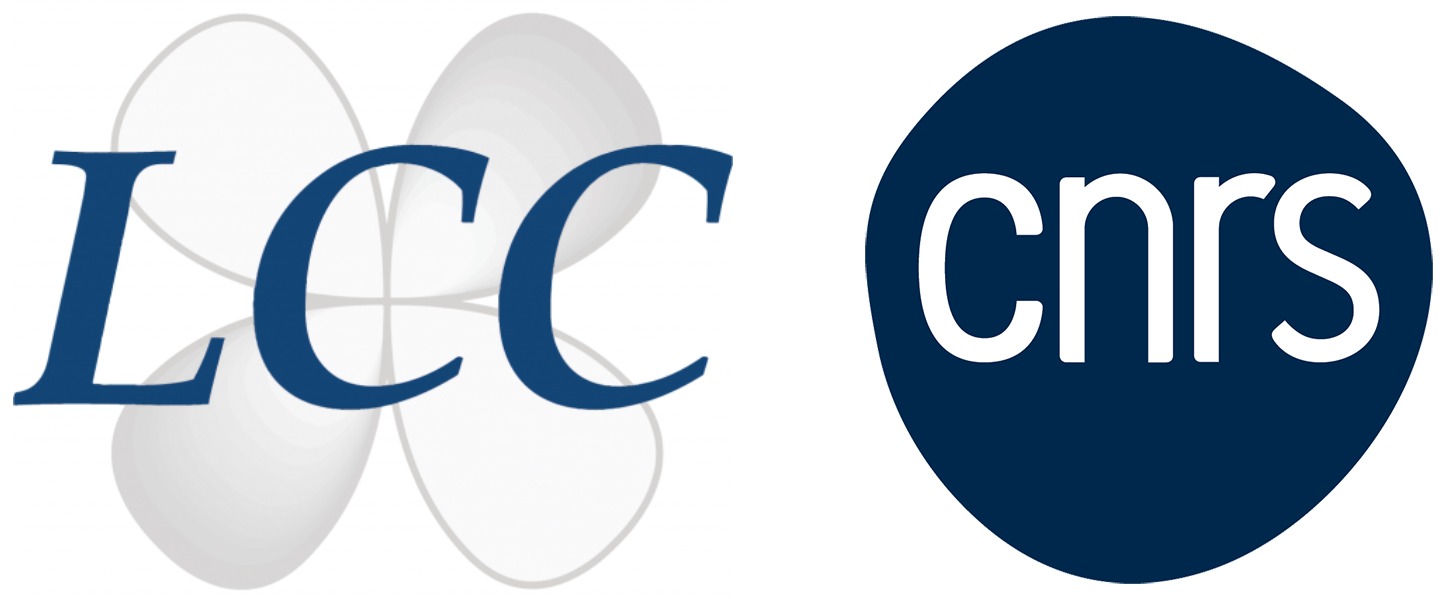
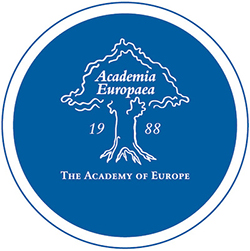
![Les plastiques de demain s’imaginent aujourd’hui [podcast]](https://www.lcc-toulouse.fr/wp-content/uploads/2025/01/Fliedel_PodcastCNRS-400x250.jpeg)
